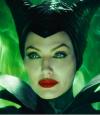Site Search
Copyright © 2024 Highbrow Magazine
by Ulises Duenas
James Gandolfini as Tony Soprano presented a complex character who showed the full range of triumph and tragedy. Edie Falco as his wife Carmela and Lorraine Bracco as therapist Jennifer Melfi are other standouts who go through their own arcs.
Read more...by Nir Eisikovits
Banning TikTok would benefit Meta and Google, their parent companies, but it wouldn’t benefit national security. People would still be exposed to as much junk news as before, and experience shows that these social media platforms could be vulnerable to manipulation as well.
Read more...




























































































































































































































































































































Copyright © 2024 Highbrow Magazine




